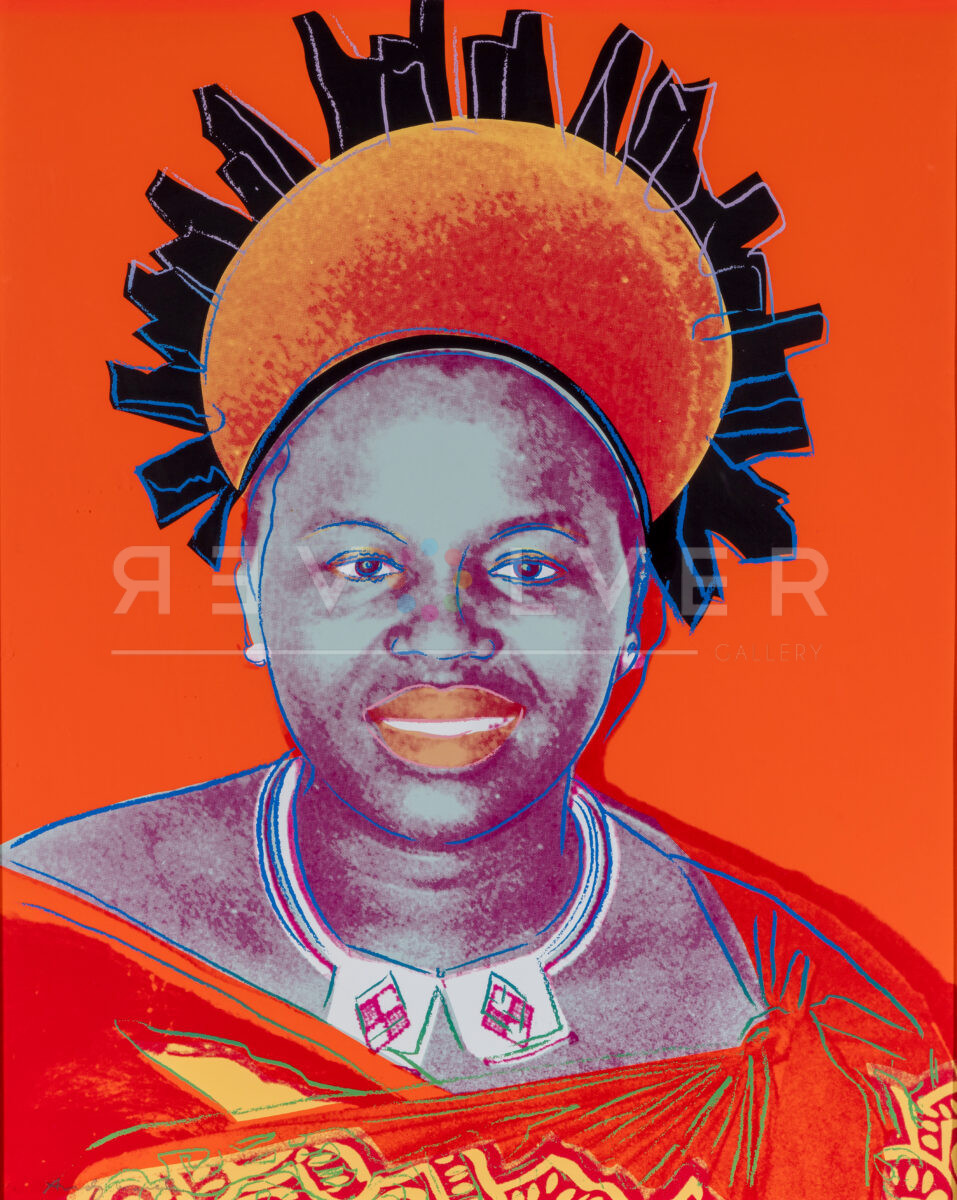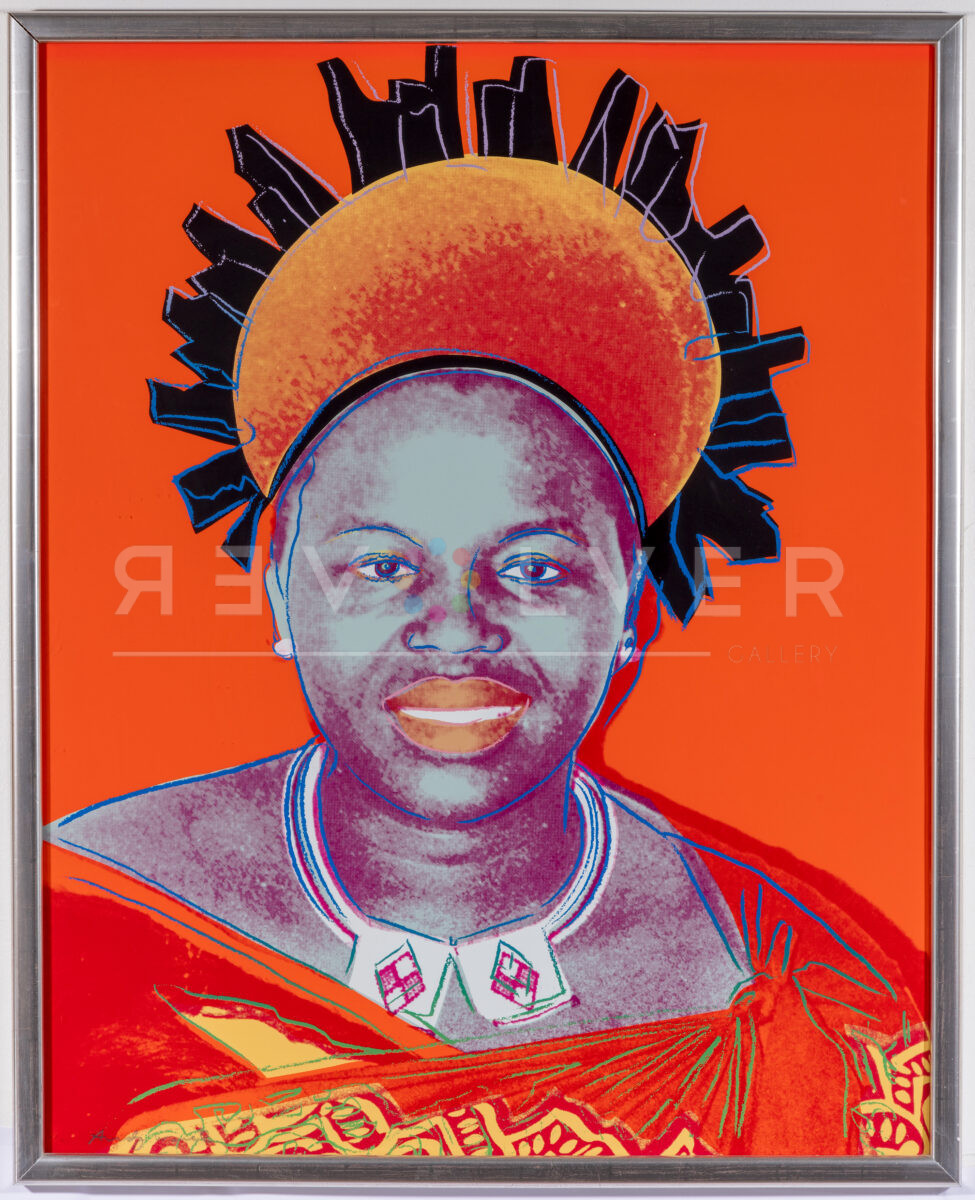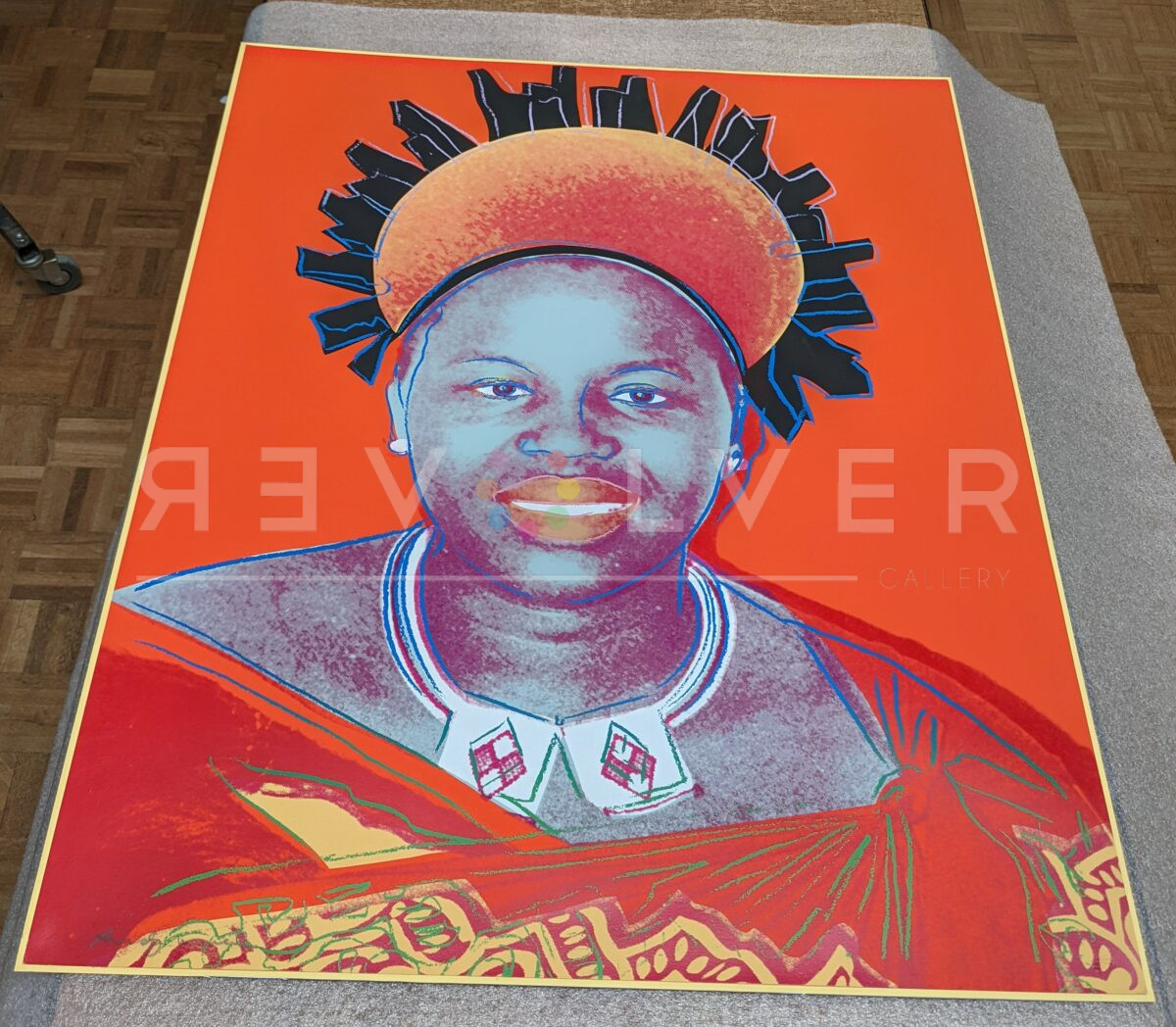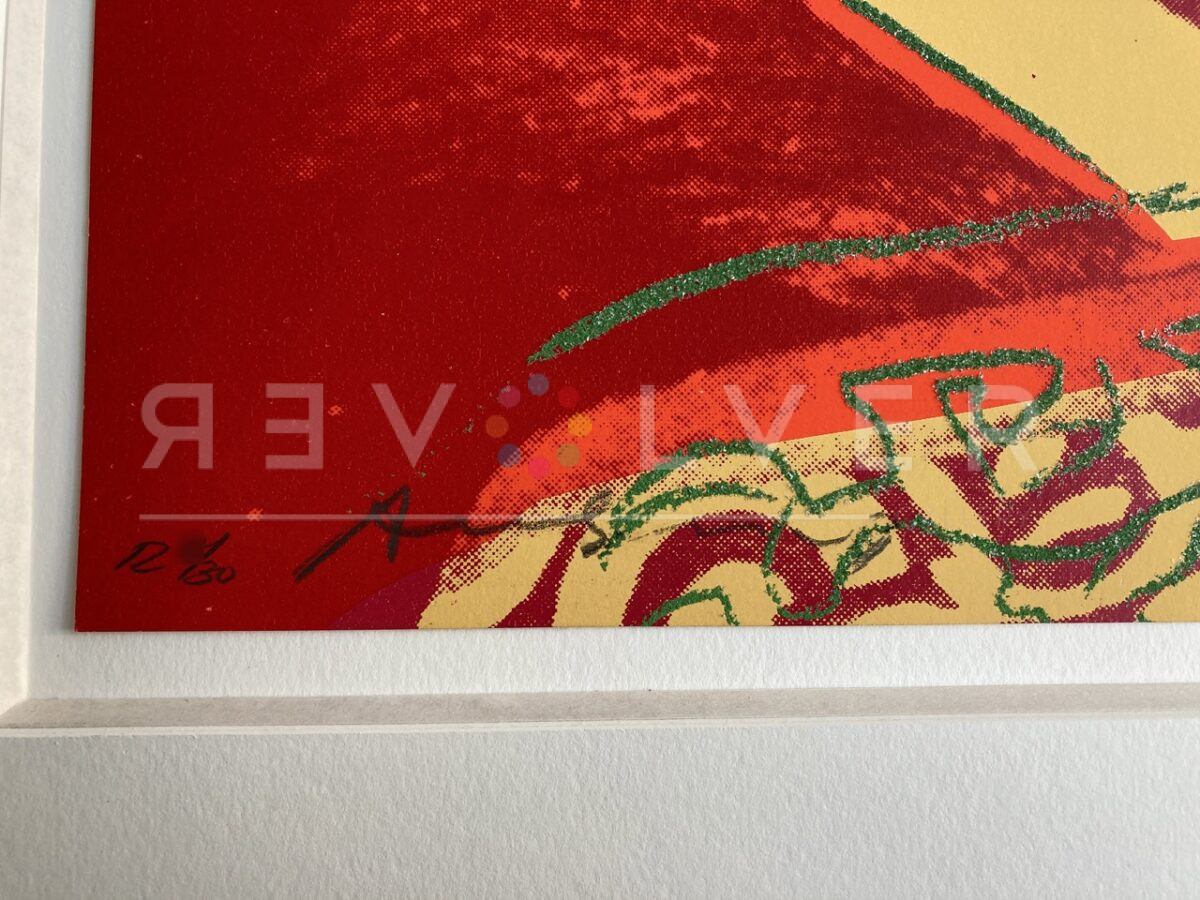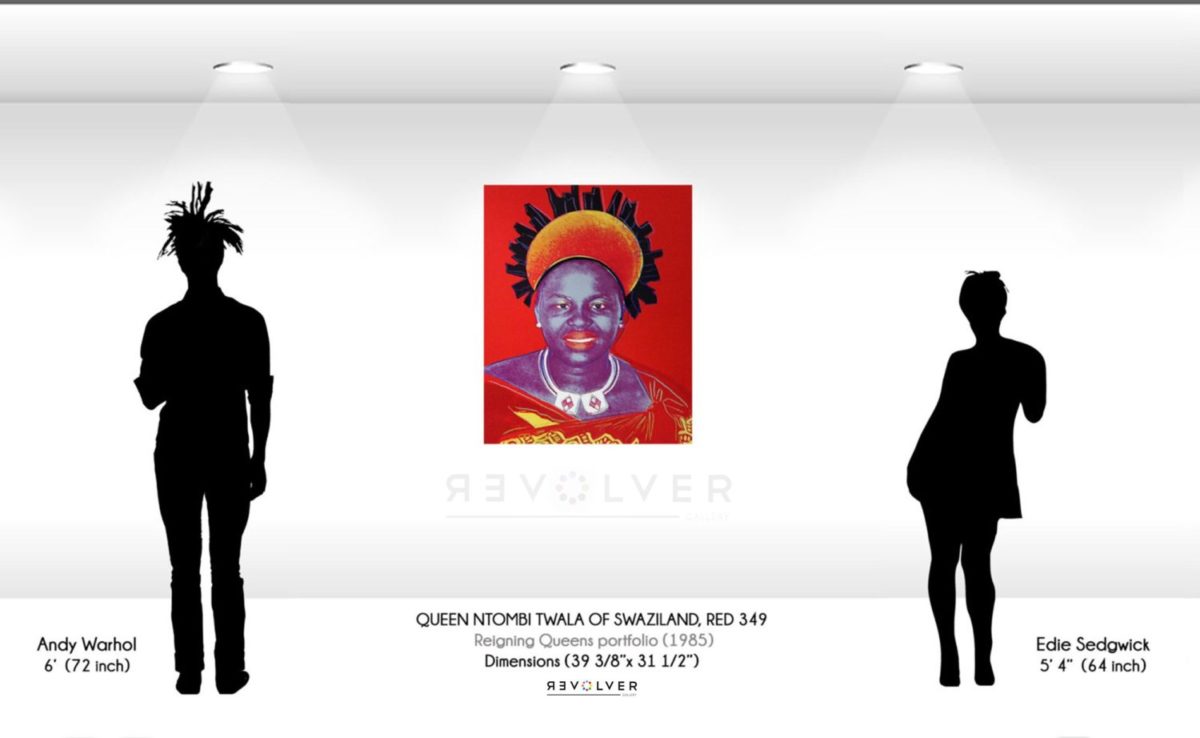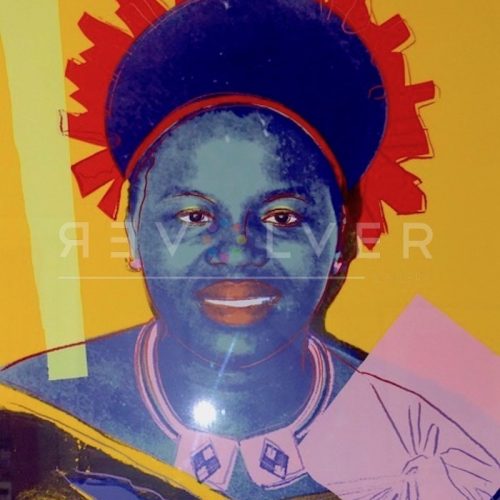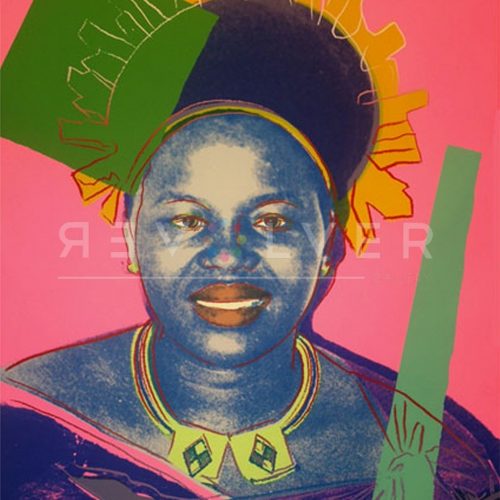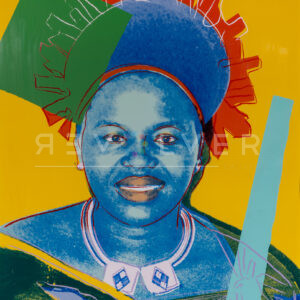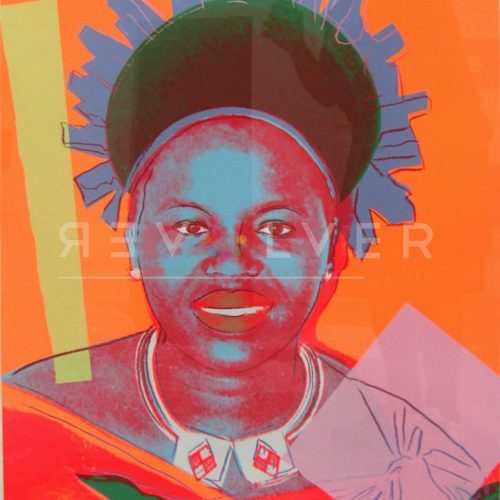Queen Ntombi Twala 349 by Andy Warhol is one of sixteen prints from the artist’s Reigning Queens series. The collection reflects Warhol’s interest in fame and women of power. All four queens in this series received their power from birthright, rather than marriage. The contrasting red and orange in this specific print softens the queen’s facial features creating a captivating image. Likewise, the softer purple allows the queen’s red lips to boldly stand out.
Warhol created this print with the silk screening technique, his signature approach to portraiture. Silk screening allows ink to pass through a porous fabric creating bold colors one layer at a time. This technique was a huge contribution to the growing popularity of the pop art movement in the 50s and 60s. Almost all of Warhol’s most renowned works were silk screened, such as Campbell Soup I and Flowers.
The Reigning Queens series includes four portraits of four queens: Queen Margrethe II of Denmark, Queen Elizabeth II of the United Kingdom, and Queen Beatrix of The Netherlands. When the portfolio debuted, each queen was in power.
Warhol was fascinated by those with status, power, and money. Consequently, these are all common themes in his work. He produced images of many star-studded celebrities like Mick Jagger and Marilyn Monroe. Although, Warhol’s fascination for iconic people didn’t end at the boundaries of traditional celebrity; as we see in Reigning Queens, Warhol celebrates the feminine power prestige of these women, presenting them in the same way he would present a celebrity of American pop culture. In fact, Warhol’s inclusion of global figures, athletes, and socialites into his canon of artwork helped expand our concept of “celebrity” itself.
This collection contains 16 total portraits, four of each queen. Warhol infamously used the concept of repetition throughout his work. The silk screen technique allowed Warhol to easily reproduce repetitive images, yet still add a spin to each single print. He did this by incorporating different bold colors to each portrait and ultimately realizing his signature pop-art style. The repetition in Warhol’s work symbolized mass consumption. Warhol may also have been commenting on the media’s obsession with celebrities, and their repeated images in the news.
The Reigning Queens were not the only political figures Warhol chose to depict through Pop Art. He also published colorful portraits of John F. Kennedy, Mao Zedong, and created a poster for George McGovern’s 1972 presidential campaign.
In Warhol’s Reigning Queens series, he chose to recreate the state portraits of each queen. It is possible he chose these images because these portraits were often produced on stamps and currency. Again, Warhol alludes to the phenomenon of mass consumption. For many of his portraits, Warhol would choose an ordinary photo to recreate by using bold contrasting colors, therefore bringing the photo to life.
The chosen colors of bold reds, bright yellows, and soft purples in this image display a powerful contrasting image of Queen Ntombi Twala, showing the queen’s true power. Queen Ntombi Twala 349 is a prime example of Warhol’s pop-art mastery.
Photo credit: Queen Ntombi Twala in 2016. Unknown photographer.

